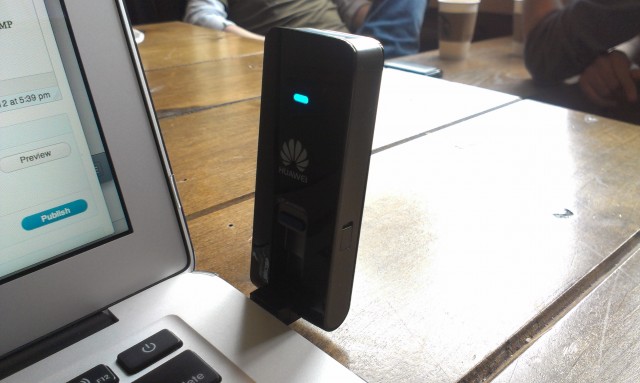
The mobile internet stick is either a business persons’ life saver, or a laymans’ niche product. Most modern smartphones are able to create mobile hotspots, the latest ones over LTE, largely negating the usefulness of the once-popular accessory.
The Huawei E397 is the latest LTE-capable internet stick from TELUS, selling for $0 on a 3-year term and $149 outright. Pre-set buckets of data cost $35 for 2GB and $60 for 6GB making it a great deal cheaper than the data allotment provided by most voice+data plans. Flex plans are available, too, starting at $10 for 100MB, going up to $90 for 9GB.
It’s not the most attract device: the E397 resembles a candybar, and at 15.5mm thick consumes significantly more space than the average USB stick. But it’s also less wide than Bell’s and Rogers’ Sierra Wireless AirCard 330U, so it all evens out.
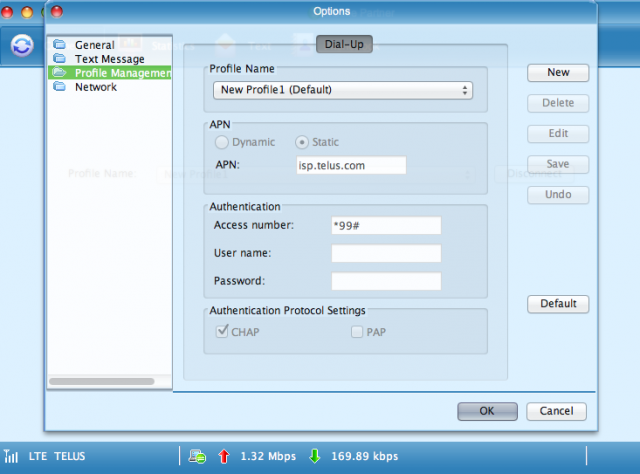
The stick comes with 128MB of internal storage, some of which is taken up by the plug-and-play software for OS X and Windows. There’s a microSD slot for an extra 32GB if you intend to replace your USB key. The E397 swivels vertically and horizontally for optimal placement, which is nice.
The software installs very easily, but was not configured with a TELUS APN out of the box, which meant I had to delve into the settings to get it working. isp.telus.com and I was good to go. Unlike other pieces of software, the included Huawei Mobile Partner app connected immediately to the network on my MacBook Air and stayed connected for hours. The same can’t be said for Sierra Wireless’ and Novatel’s Ovation software, which has always been buggy on OS X. It’s clear the application was designed to work on Windows, as it adopts the primary sky blue pastel of Windows XP.
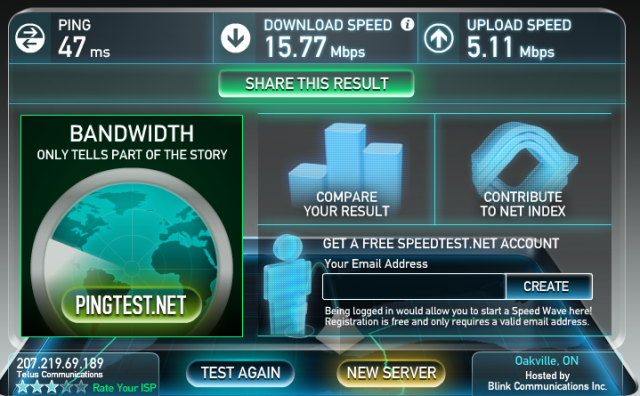
Speed-wise the E397 is nothing to brag about, but achieved reasonably fast LTE speeds and low ping times throughout testing.
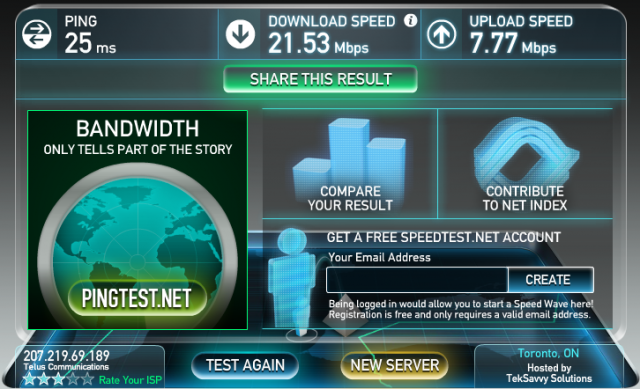
I breached 20Mbps down and 10Mbps up a few times, but it appears that either the stick cannot achieve the same speeds of the U330, or TELUS’ network is not as strong in downtown Toronto as Rogers’. Either way, 21Mbps is nothing to complain about. Just be aware that the “regular” internet uses significantly more data, on average, than the mobile web. There’s also nothing stopping background Windows or OS X tasks from syncing hundreds of megabytes from the cloud, so be aware of your usage and work within it.
To that end, the Mobile Partner app provides a handy statistics tab detailing how much you’ve downloaded in the day, week or month. Unfortunately there is no way to limit those amounts, so you’ll have to keep vigilant or download a 3rd-party app.
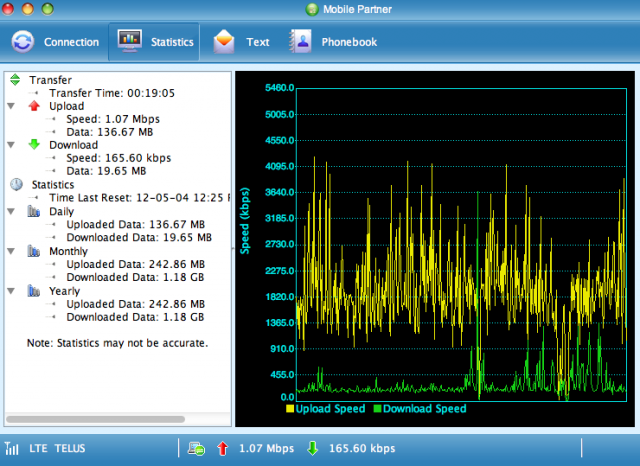
As with most pieces of software for internet sticks, you can send text messages and store contacts on the built-in SIM card. While the device is unlikely to replace a mobile phone, being SIM card-activated means it has a phone number and can thus send text messages.
The Huawei E397 LTE Mobile Internet Stick is available from TELUS for $0 on a 3-year term, $49.99 on a 2-year term, $99.99 on a 1-year term and $149.99 outright.
MobileSyrup may earn a commission from purchases made via our links, which helps fund the journalism we provide free on our website. These links do not influence our editorial content. Support us here.


